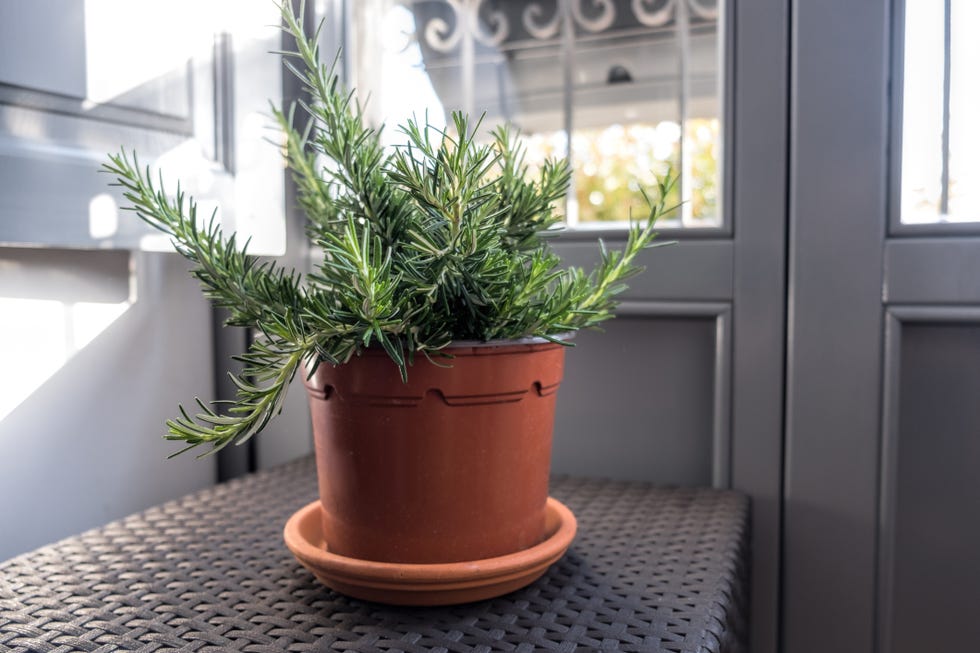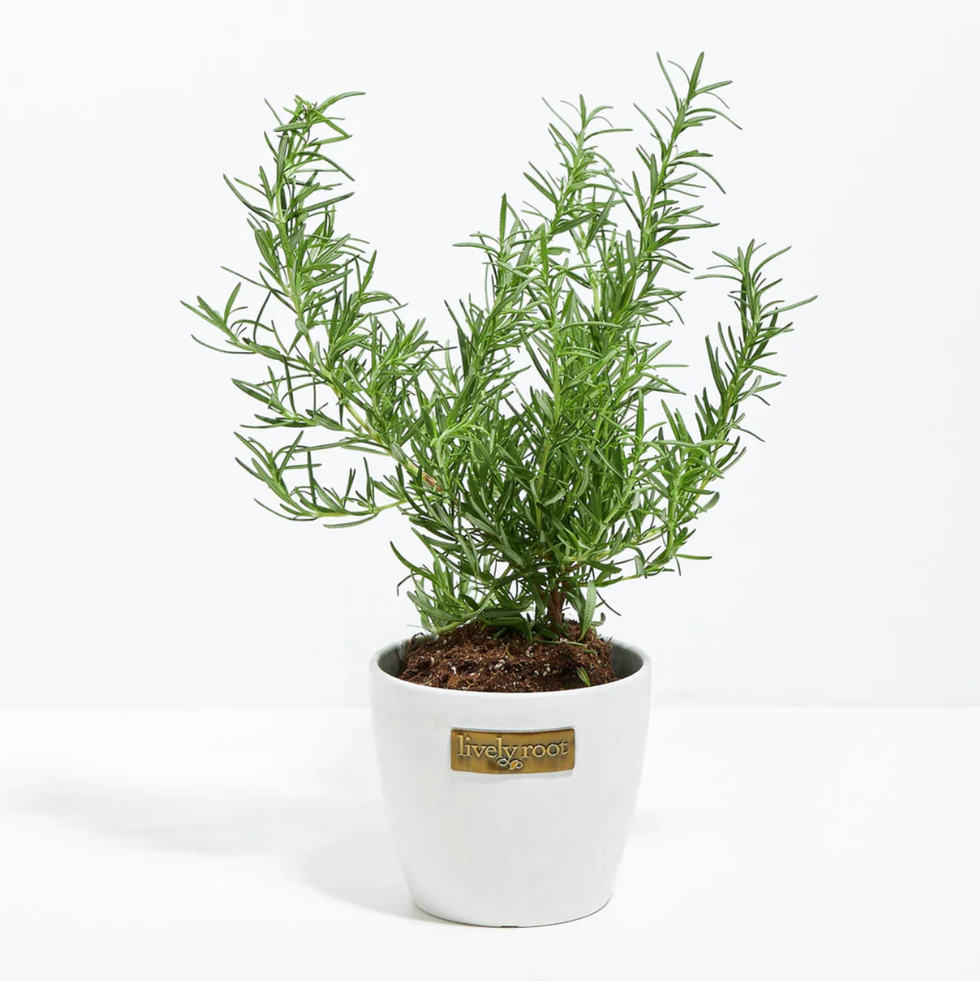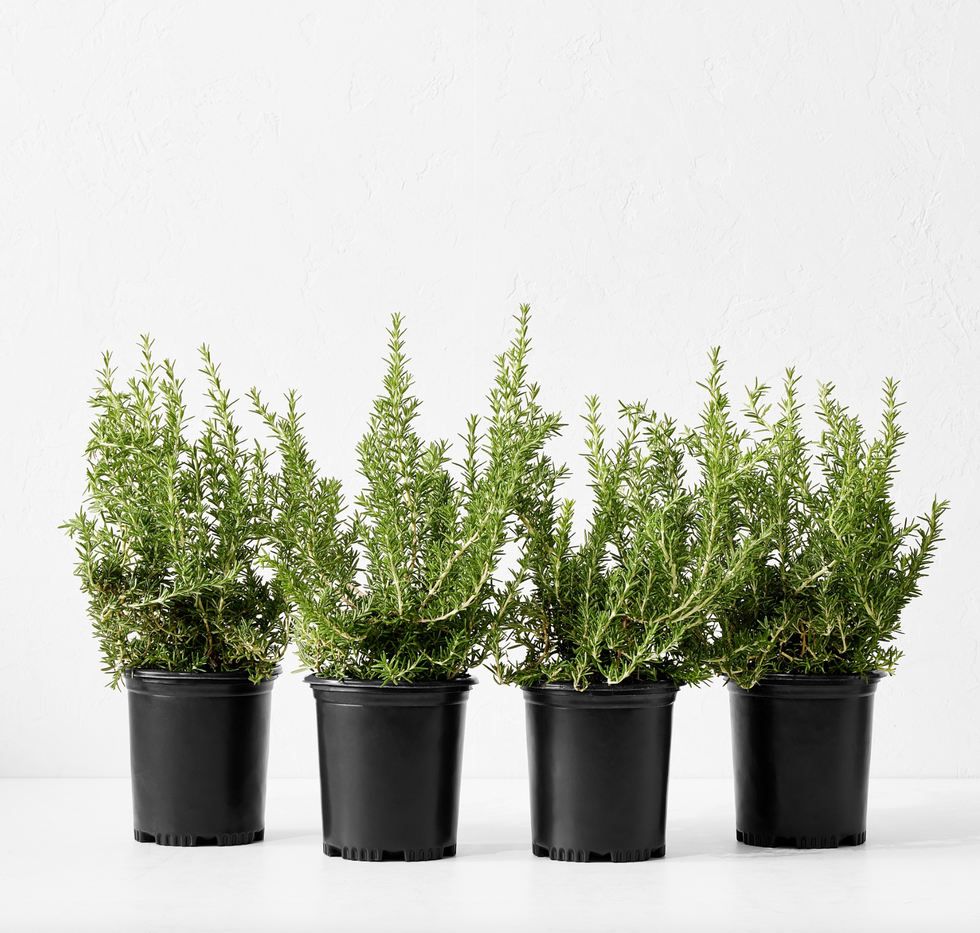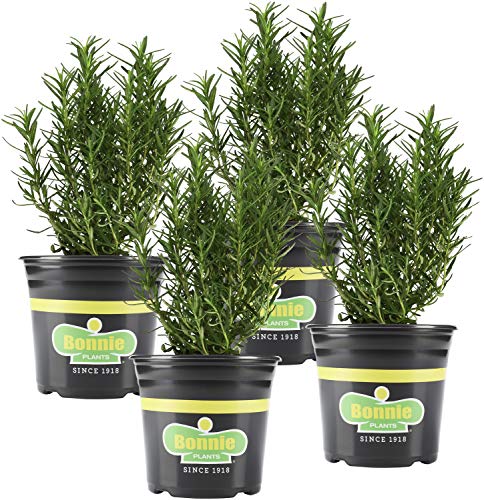Beloved for its fragrant leaves and versatility, rosemary is a favorite herb among gardeners. Whether you grow it in a pot on your windowsill to use in your latest recipe or as a filler in your garden beds, cultivating rosemary is easier than you’d think. Despite its high-maintenance reputation, we like to think that rosemary is simply misunderstood. Author of The Modern Plant Parent and owner of Wesleaf, Weslie Etienne Pierre, agrees and is here to offer expert advice on how to grow and care for rosemary.
Related Stories
The first thing you should know? This workhorse plant has a lot of versatility. “You can plant it in a pot, preferably terracotta, or in the ground and have it live indoors or outside,” says Pierre. Unlike other herbs like mint or basil, rosemary thrives in bright and dry areas. “It needs bright, full sunlight and no shade, so plant it away from trees,” she suggests. “If you’re keeping it indoors, a south-facing window with full access to the sky is best.”
No matter your reasons for growing this fan-favorite herb, we’re here to help you keep it thriving all season long. Read on for everything you need to know about growing rosemary at home.
Rosemary Basics
Soumi Sarkar
About Rosemary Plants
With a pleasant, piney scent and handsome dark green foliage with silvery-green undersides, rosemary is a must-have for any garden. As a member of the mint family, rosemary (Rosmarinus Officinalis) comes in both upright and creeping varieties, and is super-easy to grow in garden beds or pots on your deck, patio, or balcony. Small purple-blue, pink, or white flowers appear clustered along the branches in late spring to early summer.
Native to the Mediterranean, rosemary is drought-tolerant once established. In USDA Hardiness Zones eight and up (find your zone here), it’s a perennial evergreen shrub that can reach up to six feet tall and four feet wide, depending on the variety. In colder parts of the country, you can bring your rosemary indoors for the winter before nighttime temperatures drop into the forties. “Plant rosemary after the last frost, or even wait an extra week to be on the safe side,” Pierre advises.
How to Grow and Care for Rosemary
ANITA BLAKER//Getty Images
Rosemary can be grown from seed (if you have a lot of patience—germination is iffy and can take up to a month!), but it’s easier to purchase a small plant, which will grow quickly, especially under the right conditions.
Exposure and Weather Preferences
Rosemary loves the sun and lots of it. It needs at least six hours of direct sunlight per day; too little light, and the plant will develop weak, spindly growth. Rosemary doesn’t mind the heat, though it can get powdery mildew if it’s particularly humid or rainy. That said, this usually doesn’t kill the plant; just don’t use any affected branches for cooking. To prevent disease, give it plenty of good air circulation around the plant.
Soil Conditions
“Rosemary prefers a rich soil with a sandy mix and ample drainage,” says Pierre. Rosemary can tolerate poor soil, but it thrives in sandy types similar to its native range. If you have heavy clay, grow your plant in pots instead. An unglazed terra cotta pot is a great choice because excess moisture can evaporate. Also, make sure any container has a drain hole because no plant likes soggy feet.
Watering and Fertilizer Needs
Although rosemary prefers soil on the dry side, water your plant every few days if there’s no rain. Indoors, let it dry out slightly before watering again. Stick your finger in the pot, and if soil clings to it, wait another day or two to check again.
Rosemary isn’t a heavy feeder, so you don’t need to feed it like other garden plants. If grown in-ground in a warm climate, you can add some compost every spring, if you like. Otherwise, you’ll probably find potted rosemary grows quite vigorously without any help from you.
How to Grow Rosemary Indoors
Getty Images
If you don’t have a ton of outdoor space and are wondering if you can grow rosemary indoors, the answer is a resounding yes! Doing so is as simple as following the same tips for growing rosemary outdoors. The biggest challenge with indoor growth is making sure the plant gets enough bright light. Keep it in a bright east, west, or south-facing window, or use a grow light to compensate for a shady corner. In general, north-facing windows don’t offer enough light, especially during the winter in northern climates. Insufficient light will cause your rosemary plant to develop weak growth and drop leaves.
How to Harvest Your Rosemary
Liliya Krueger//Getty Images
Rosemary is amazing when used in both fresh and dried forms. To harvest the plant, simply snip off a piece a few inches long for use. Throughout the year, harvest from different parts of the plant to encourage branching all the way around. If drying for later use, tie together a few branches, hang upside down out of direct sunlight, and allow to air dry. Rub the branches gently with your fingertips to remove the leaves once dry, and store them in a lidded glass jar or the freezer.
For mature plants in warm climates, you can shape them with gentle pruning to maintain their globe form. Pruning also helps develop the plant into a bushier shape. You can even prune it into a topiary form, such as a Christmas tree shape, if you’re feeling particularly ambitious.
 Lively Root Tuscan Blue Rosemary
Lively Root Tuscan Blue Rosemary Alder & Oak Rosemary Shrub, 12″, Set of 4
Alder & Oak Rosemary Shrub, 12″, Set of 4 Bonnie Plants Rosemary, 4-pack
Bonnie Plants Rosemary, 4-pack HOME GROWN Rosemary Seeds Pack
HOME GROWN Rosemary Seeds Pack
Now 15% Off
Follow House Beautiful on Instagram and TikTok.

